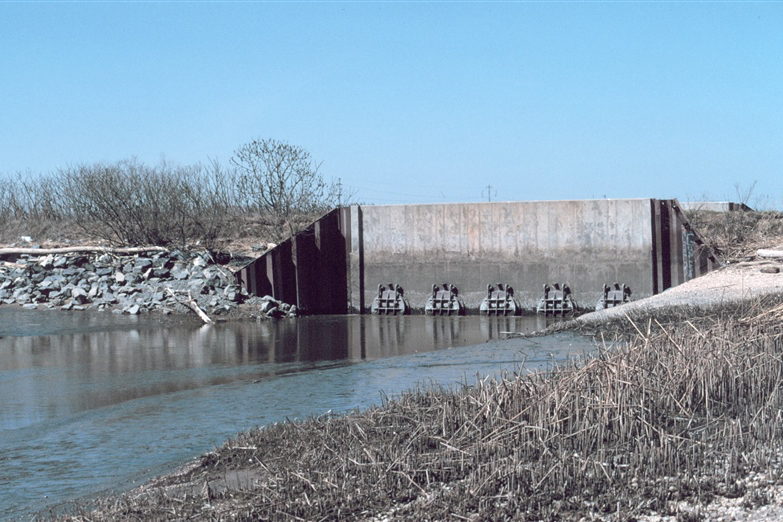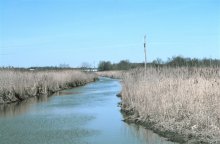Amended Restoration Plan Released for Army Creek Habitat Project
April 5, 2023
The Army Creek Superfund Site Trustee Council released an amended draft restoration plan (PDF, 28 pages) to replace a project that was previously approved in the final restoration plan from 1995. The original project to restore the wetlands at the Lower Army Creek is no longer feasible and the Trustees are now proposing a habitat restoration project near Dover, Delaware. The proposed alternative for restoration is to restore tidal exchange to wetlands at Pickering Beach marsh that are of similar type and habitat value as those that were impacted at the original Army Creek site. This is necessary since it is not feasible to conduct the tidal hydrologic connection that would have been required at Army Creek in order to complete the restoration on-site. The Trustees concluded that of the alternative sites considered, the Pickering Beach Marsh site provided the most similar resource benefits, albeit at a distance away from the originally impacted site. The document is now out for public comment for 45 days until May 20, 2023.
About the Project
The Pickering Beach Marsh Tidal Wetlands Restoration project would restore tidal exchange and channels to approximately 175 acres of wetlands north of Pickering Beach Road, where natural inlets to Delaware Bay no longer exist due to impoundment by dikes and roadways. The lack of proper hydrology (daily tidal flushing) has reduced much of the marsh to high marsh habitat with altered vegetation as a result, which does not provide as much direct benefit to fishery resources. Restoring tidal hydrology would increase access to marsh habitat for fish resources, and provide a better mix of low and high marsh habitat.
The proposed project at Pickering Beach Marsh would involve the following components:
- Restoration of an approximately 1.3-mile long ditch to re-establish tidal flow in the marsh
- Enlarging culverts to improve water exchange
- Replacement of a water control structure to improve tidal flow
The project would benefit fisheries as well as improve the health of the wetland’s habitat and the abundance of wildlife that rely upon it.
Public Comment
The Trustee Council is accepting comments on the amended draft restoration plan for a 45-day comment period open through May 20, 2023. Please send your written comments on the draft plan to Rich Takacs no later than May 20, 2023.
Submit comments:
- By email to: rich.takacs@noaa.gov
-
By mail to:
Richard Takacs
NOAA Restoration Center, 200 Harry S. Truman Parkway, Suite 460
Annapolis, MD 21401
Download a copy of the Draft Restoration Plan here.
Background on the Army Creek Superfund Site
The Army Creek Superfund Site was originally a 60-acre sand and gravel pit that was used as a landfill for waste by multiple responsible parties during the 1960s. In the early 1970s, private drinking wells near the landfill were found to have contaminants due to contaminated groundwater leaching into the wells. This prompted New Castle County to install a recovery well system which prevented the contaminated groundwater from entering the public water supply. This removed the threat to human health; however, the recovered groundwater was being discharged into Army Creek, untreated, causing contamination of the creek and surrounding wetlands. Studies in the 1980’s deemed the site as a hazardous waste release site and the landfill was placed on the National Priorities List in 1983.
Since then eighteen Potentially Responsible Parties have been required to implement clean-up and restoration actions. Since the 1990s, multiple remediation projects have been implemented including completion of a water treatment facility and landfill cap however restoration actions have not yet taken place. The original restoration project, which proposed restoring flow into Army Creek via replacement of the non-functioning tidegate) that was proposed in 1995 is no longer feasible because its implementation would ultimately pose a significant risk of flooding to nearby roads. With this amended draft restoration plan, the trustees examined a number of alternative potential restoration projects that would provide similar resource benefits, and are proposing to restore tidal wetland hydrology and habitat by restoring tidal flow and water exchange in marshes at Pickering Beach.







